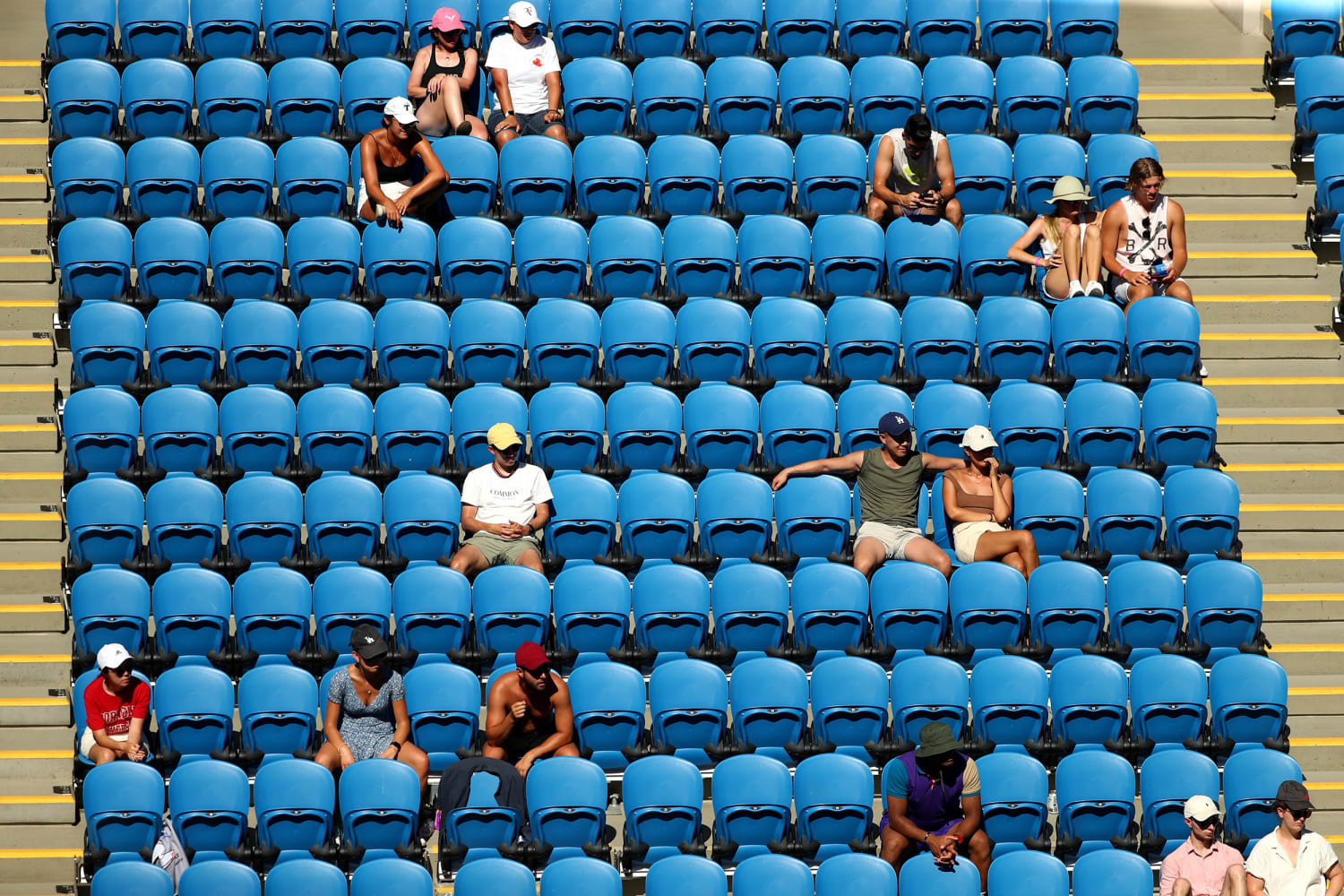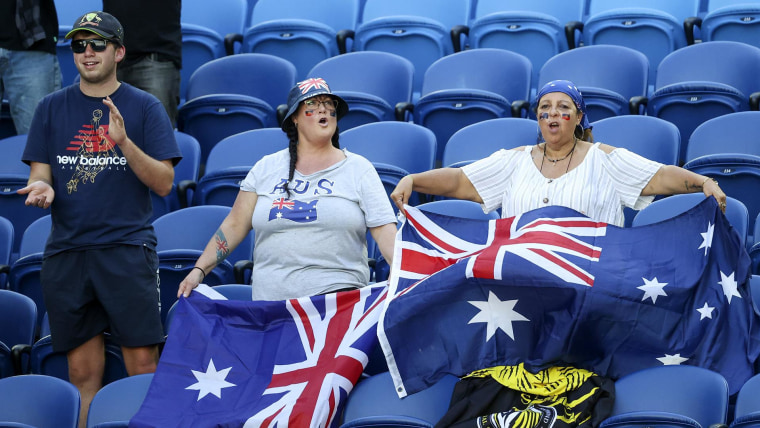MELBOURNE — Making the Olympics safe from coronavirus will be difficult for Tokyo without stiff quarantine measures that will also inspire athletes and spectators with the confidence to attend events, Australia’s top tennis official said on Wednesday.
The Japanese capital is expected to welcome 11,000 athletes at the end of July, when it holds the summer Games postponed from last year because of the virus, but is not currently considering wholesale quarantine for them.
Speaking on the sidelines of the Australian Open, the first major Grand Slam event to host crowds, the chief executive of Tennis Australia said his experience of organizing the contest suggested the Olympics needed rigorous quarantine measures.
“I’ve seen the playbook for the Olympics and I’ve looked at it carefully,” Craig Tiley told Reuters. “And compared to what we’ve done, we’ve had a far more rigorous program than is being proposed at the Olympics.”
Download the NBC News app for breaking news and politics
It took a grueling effort by his 600-strong team over the last 11 months to get the year’s biggest sporting event, the Australian Open, ready for crowds amid the pandemic.
That included ferrying 1,200 players, officials and media on 17 flights from 8 countries, arranging 14 days of quarantine and more than 30,000 tests, while limiting any chance for the virus to return to a city that stamped it out with four months of hard lockdown last year.
Despite all that rigor, 10 people still tested positive, forcing the abandonment of a full day of warm-up matches while further testing and isolation measures were adopted.
No new related cases have emerged, but Tiley is aware that there is still a long way to go.
“I love the Olympic Games,” he said. “I’d like to see it be successful. But with the experience we had, I cannot see it working.”
Tiley suggested that Olympics organizers extend the games to allow for longer quarantine periods, with athletes training in their own accommodation, such as on a university campus, before staged competition periods for each event.
“There’s no such thing as no risk,” he added. “But I cannot see it being done any other way, unless you are willing to accept a much higher risk of spreading the virus.”
Australia, with a tally of about 28,900 infections and 909 deaths, has proved to be one of the nations most successful in the campaign to restrain the virus.
It had technically eliminated community spread last month, but authorities and citizens are on edge since a spattering of cases that emerged in the past week among hotel workers are thought to be highly infectious strains.
That is believed to be one reason for low attendance of about 17,650 during the first two days of the tennis championship, amounting to just half the reduced COVID-19 capacity and a quarter of last year’s figure.
Longer incubation periods for new strains suggest that quarantine needs to be extended beyond two weeks, Tiley added.
He said he hoped to evolve a model that encourages audiences to global sporting events over the next few years, and share his conclusions with others as well as the International Olympic Committee and the Japanese Tennis Association.
“Vaccination is not the silver bullet,” he said. “I don’t see physical distancing and the wearing of masks and the quarantine going (away) anytime soon.”
Melbourne Park has been divided into three distinct zones, with more than 800 dispensers of hand sanitiZer installed, in addition to QTR code checks, click-and-collect arrangements for food and beverages and daily deep cleaning.
Organizers will need to make fans feel safe to entice them to attend, Tiley added.
“I think 2022 is going to be different to 2021, but not much different when it comes to health and the protection of ourselves from each other, because of the spread of the virus.”
Source: | This article originally belongs to Nbcnews.com











